
What is currently generally considered Entacmaea quadricolor seems to come in a couple of distinct forms, both as a larger solitary anemone and as clusters of smaller individuals. Often there is a swelling just below the tentacle tips. They are usually brown, but some appear reddish at depth under natural light. Since the red wavelength from sunlight is filtered out by the water in the first 5 or 6 meters (about 20 feet or less), seeing red deeper usually means that proteins in the animal are absorbing the shorter wavelengths (blues) and re-emitting longer red wavelengths. Unfortunately, the bright light from an underwater flash washes out the reds and the anemones show up as brown. The larger, solitary Entacmaea quadricolor usually host the symbiotic clownfish Amphiprion tricinctus, while the smaller, colonial anemones are almost always occupied by Amphiprion melanopus.






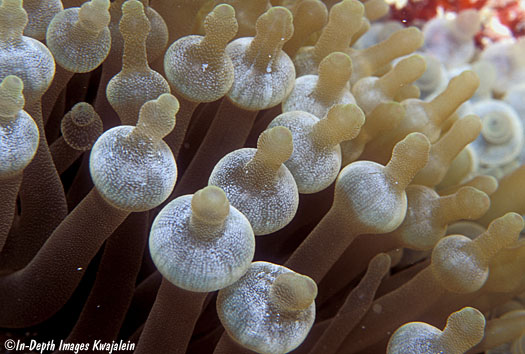
Amphiprion melanopus in the colonial form of the anemone.


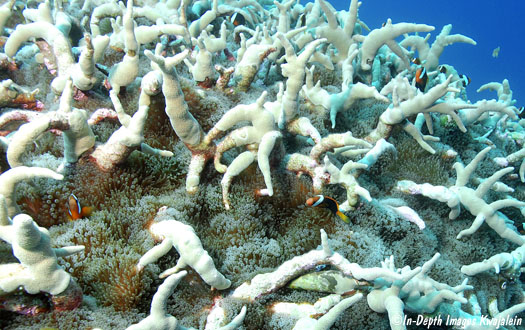
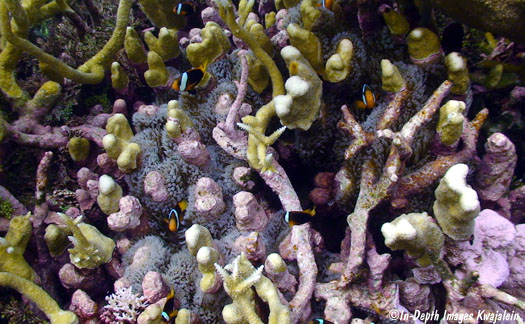
This small solitary anemone found living under a rock appears to be a juvenile Entacmaea quadricolor. Probably because of its size, there appeared to be no associated anemonefish and there were no others around to form colonies of the small form of this species. Possibly for protection from anemone eating fish like some Chaetodontidae, they live under rocks until large enough to attract protective anemonefish.



Entacmaea quadricolor is subject to bleaching. When the water temperature gets too warm and stays that way for a period of time, the symbiotic single-celled algae that lives within anemone and coral tissue and generally gives the host its color is expelled, leaving the still living anemone or coral white. Why the corals lose their algae is still not fully understood, but one speculation is that higher temperatures increase oxygen production in the algae to toxic levels. In any case, the algae symbionts are required for long term survival of the corals and anemones. If the warm water does not last too long, the corals and anemones can be recolonized by the algae and continue to survive. If the bleaching lasts too long, the hosts die, probably by starvation. At Kwajalein, this bleaching happens when the water reaches 30°C (86°F). In all our years diving in the Marshalls, starting in the 1960s with some in the 70s and early 80s, and again from 1988 onward, we first witnessed widespread coral bleaching in 2009, the first time we recorded the water reaching 30°C. It happened again in 2013, 2014, 2016 and at least to a limited extent in 2017. Many corals and anemones have died in these repeated events. Clearly the ocean is getting warmer, and it is having a serious effect on coral reefs. Below show some examples of bleaching or fully bleached Entacmaea quadricolor anemones.


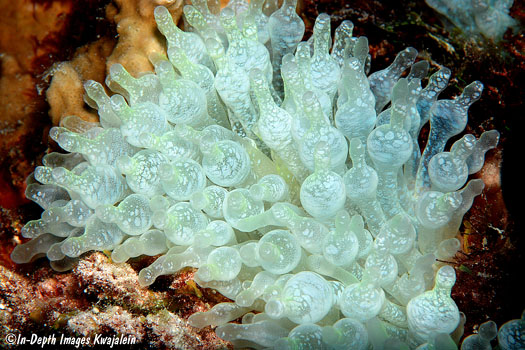
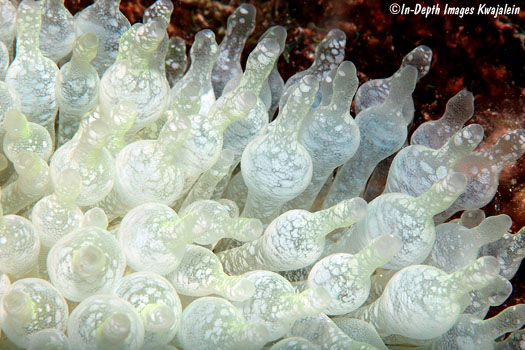


Created 27 July 2018
Updated 13 January 2019